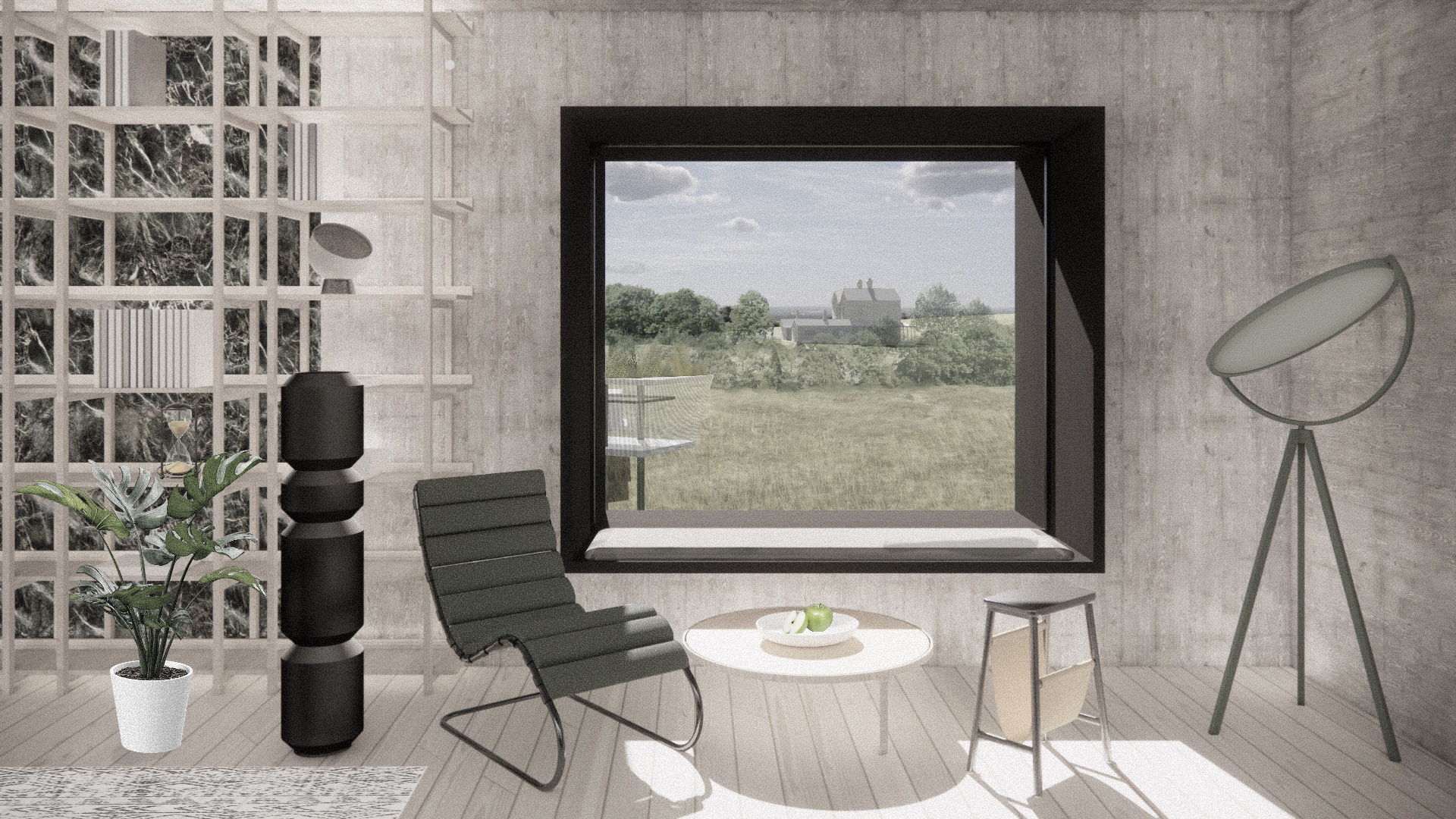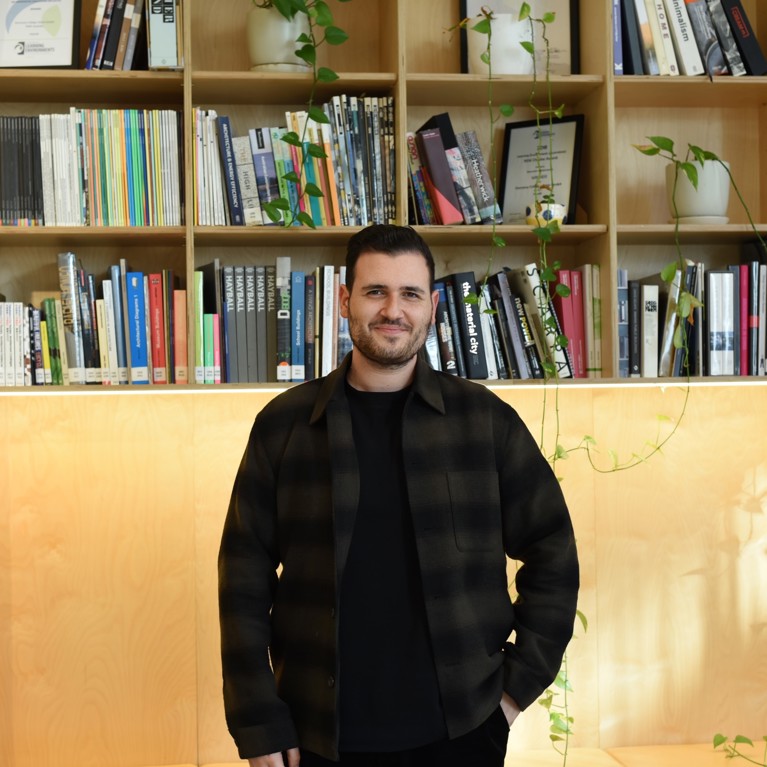For Ricky, architecture has been a passion since childhood—sparked by hours spent building and rebuilding with toy bricks. Rather than following the instructions, he loved experimenting, creating new structures from imagination. That early curiosity evolved into a love for design, eventually guiding him toward a career in architecture.
While architecture was always Ricky’s focus, he also had a deep affinity for graphic design and multimedia. “Being able to incorporate elements of graphic design and representation really allowed me to communicate my ideas freely and always as a unified package during my studies,” he shares.
When he started studying at UTS, Ricky quickly realised that architecture wasn’t just about making things look good - it was about shaping how people interact and thinking critically about the role design plays in everyday life.
“I am inspired by how architecture informs people to use space, making subtle or even obvious cues to how you can occupy elements of a place temporarily or permanently,” Ricky shares.
This broader perspective solidified his commitment to the field, leading him to continue his studies with a Master of Architecture after completing his Bachelor of Design in Architecture degree in 2020.

Why UTS?
“At UTS I found I was getting the perfect blend of Technical Application, Critical Thinking, Practice based knowledge and insight into design responses to real world challenges. It was a no brainer to continue my studies at UTS.” he says.
What drew Ricky to UTS was its hands-on approach to learning. The architecture program wasn’t just about theory—it was about engaging with real-world issues, from climate change to housing crises. “Every semester, there was something new—new perspectives, new design studios, and new challenges that pushed me to think critically,” Ricky explains.
One of the biggest takeaways from Ricky’s studies was the breadth of opportunities available to architecture graduates. “At UTS, each course and subject is led by industry leaders, specialists, and experts from all backgrounds—people who have played huge roles not only in architectural disciplines but also in science, technical fields, consultancy, and advocacy. They’re actively working on responses to key global issues,” he explains.
This exposure gave Ricky a broader perspective on what an architecture degree could lead to. “Even if you’re not seeking a role in an architectural practice, your avenues aren’t restricted to just one path post-grad,” he says. From working on sustainability projects to urban planning, design strategy, or even branching into fields like graphic design and multimedia, there are countless directions a graduate can take.
Bridging Study and Professional Life
One of the biggest advantages of studying at UTS was the strong industry connections. Through one of his design studios called After School, he made the connections that led him to his first industry role.
“Hayball, who were running the studio (Dr. Fiona Young and Natalia Krysiak at the time), approached me during the semester to work for them. Definitely, the studio connections are what brought me to the role,” he shares.
This gave him firsthand experience in a professional setting while he was still studying. Balancing work and study wasn’t easy, but it gave him an invaluable glimpse into the industry. “The reality of working in architecture is that it’s constantly evolving—you have to be adaptable and open to learning,” he says.
“My time as a master’s student allowed me to forge workflows that have aided my practical abilities across projects. Over the course of my studies, I picked up various softwares, programs and visualisation techniques”
His studies also took him beyond Australia. Ricky traveled on global study tours to Los Angeles, New York, Chicago, and San Diego during his Bachelor’s, followed by a Copenhagen tour during his master’s. These experiences broadened his perspective on architecture, showing him, how different cities approach urban design and development.
Innovative Designs and AIA Recognition
Throughout his time at UTS, Ricky’s projects tackled pressing global challenges. Rather than seeing his master's studios as a straightforward path, he treated them like an anthology - each project building on what he had learned before.
His talent and dedication didn’t go unnoticed. In 2020, he received the AIA (Australian Institute of Architects) Construction and Practice Prize for his academic excellence in recognition of his Bachelor’s studies at the 2022 AIA Student Architecture Awards.
His master’s studio project, “Index of Time” from the Unique Forms of Continuity in Space, Master of Architecture Studio was nominated for the prestigious AIA Bluescope Glenn Murcutt Student Prize in 2023. This project explored an Aesthetic Philosophy Campus, pushing the boundaries of traditional architectural thinking by blending landscape and built environments in a way that evolved over time.
Ricky’s later work developed in collaboration with fellow Master’s student Michael Chen, focused on addressing real-world challenges, including climate resilience and housing affordability. Their Dyarubbin Rivers Project tackled flooding and land loss along the Hawkesbury-Nepean River by proposing a flood-resilient civic space. Their final thesis project reimagined McMansion-style suburban housing in response to Sydney’s housing crisis, proposing more inclusive and adaptable models for the future.
After years of pushing boundaries and refining his skills, Ricky graduated with distinction and was named AIA UTS Graduate of the Year (Masters) in 2025. “This recognition reflects a journey of learning, collaboration, and a passion for thoughtful design,” he reflects.




